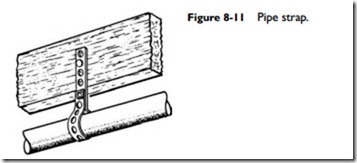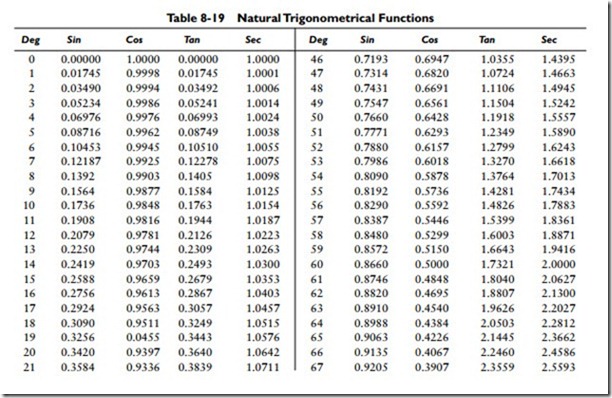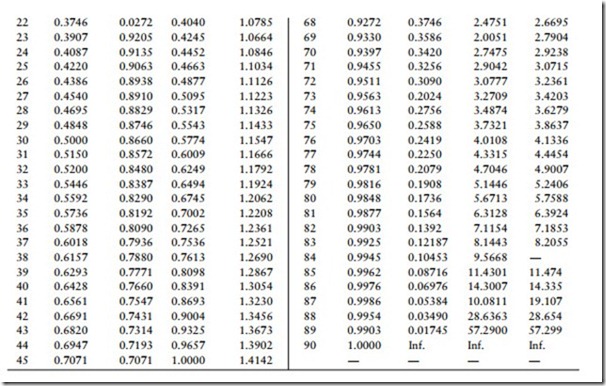Pipe Supports
If piping is to be run along the wall or ceiling, it should be attached to the surface with pipe supports (for example, hangers, straps, clamps). The type of pipe supports used and their spacing will be regulated in accordance with approved local standards.
Pipe straps (perforated metal straps) are used to support small size pipes (see Figure 8-11). Larger pipes require various types of hangers (for example, rod, spring), chains, or other devices capable of supporting the heavier weight.
Vertical pipe is best supported with a shoulder clamp attached to the flooring at the point through which the pipe passes, or by clamps attached to adjacent walls or columns.
Pipe hangers and anchors are also used for supporting suspended piping or securing it (as in the case of anchors) to adjacent surfaces. Hangers are similar in appearance and function to pipe straps (see previous).
Joint Compound
Joint compound (also referred to as pipe dope) is a substance applied to the male thread when making up screwed joints. The purpose of applying a joint compound is to lubricate the threads so that tightening is made easier. By lubricating the threads, the friction and heat produced by the tightening operation are greatly
reduced. Moreover, the joint compound forms a seal inside the screwed joint, which prevents leakage and ensures a tight joint.
Joint compounds are commercially available, or they may be made on the job from a variety of different materials. Red lead, white lead, or graphite have frequently been used as a joint com- pound. Red lead produces a very tight joint, but it hardens to such an extent that it is difficult to unscrew the joint for repairs.
A tape material has also been developed for use in making up screwed joints. It functions in the same manner as a joint com- pound. The tape is made of Teflon and is so thin that it will sink into the threads when wrapped around them.
An old toothbrush is an excellent tool for applying joint com- pound to the thread. It is important to remember that the joint compound must be applied to the male thread only. If it is applied to the female thread, some of it will be forced into the pipe where it will lodge as a contaminating substance.


